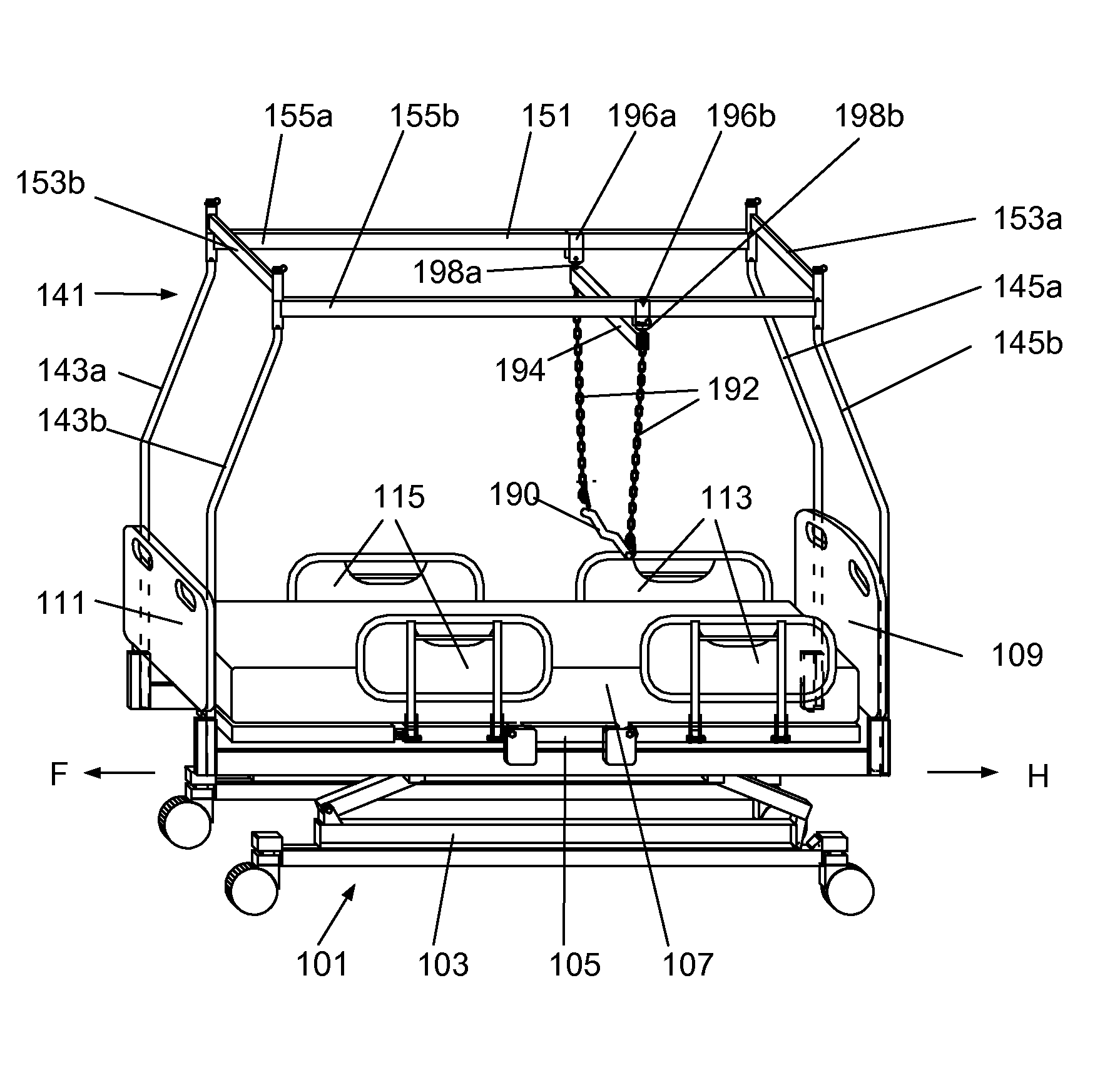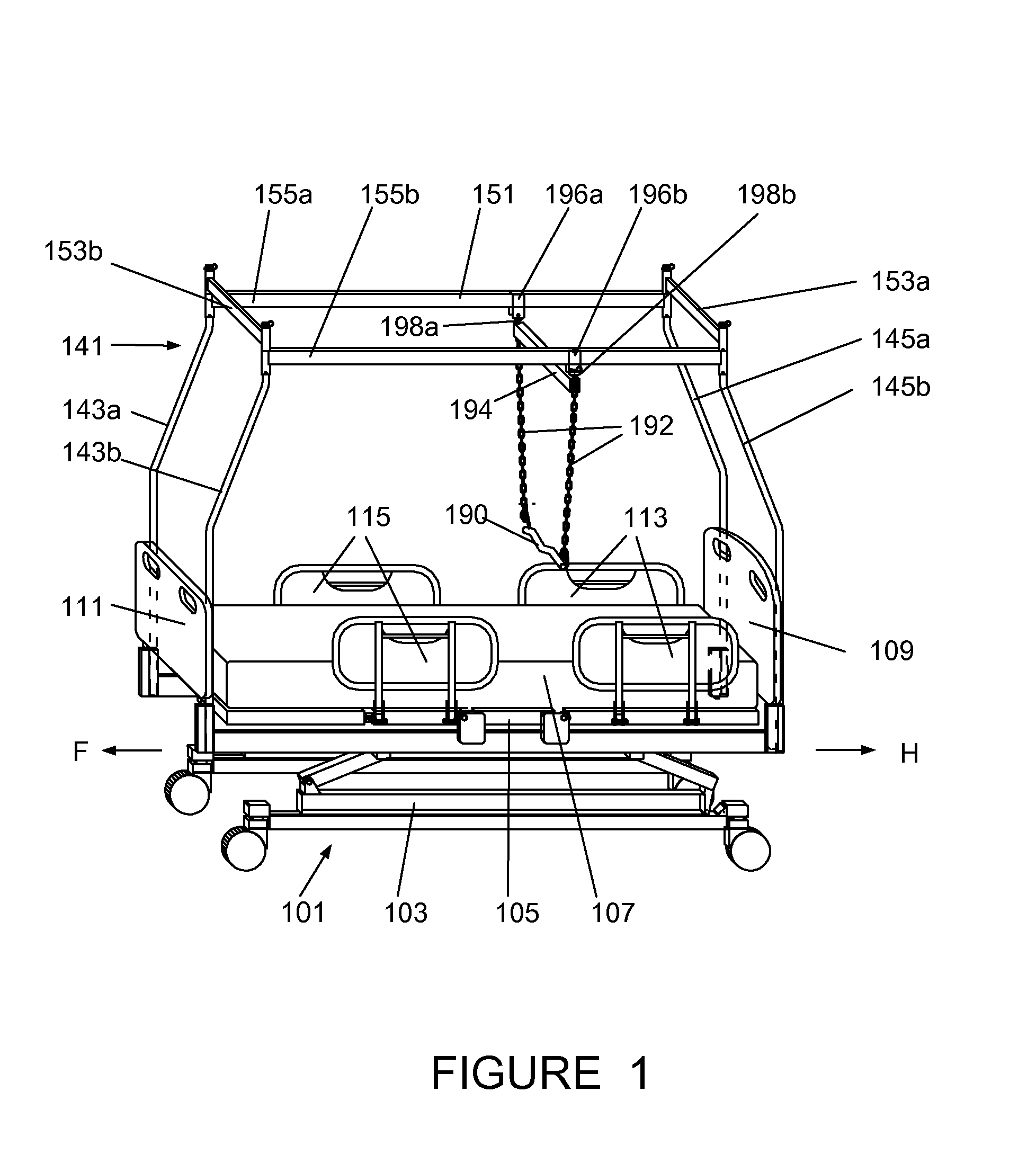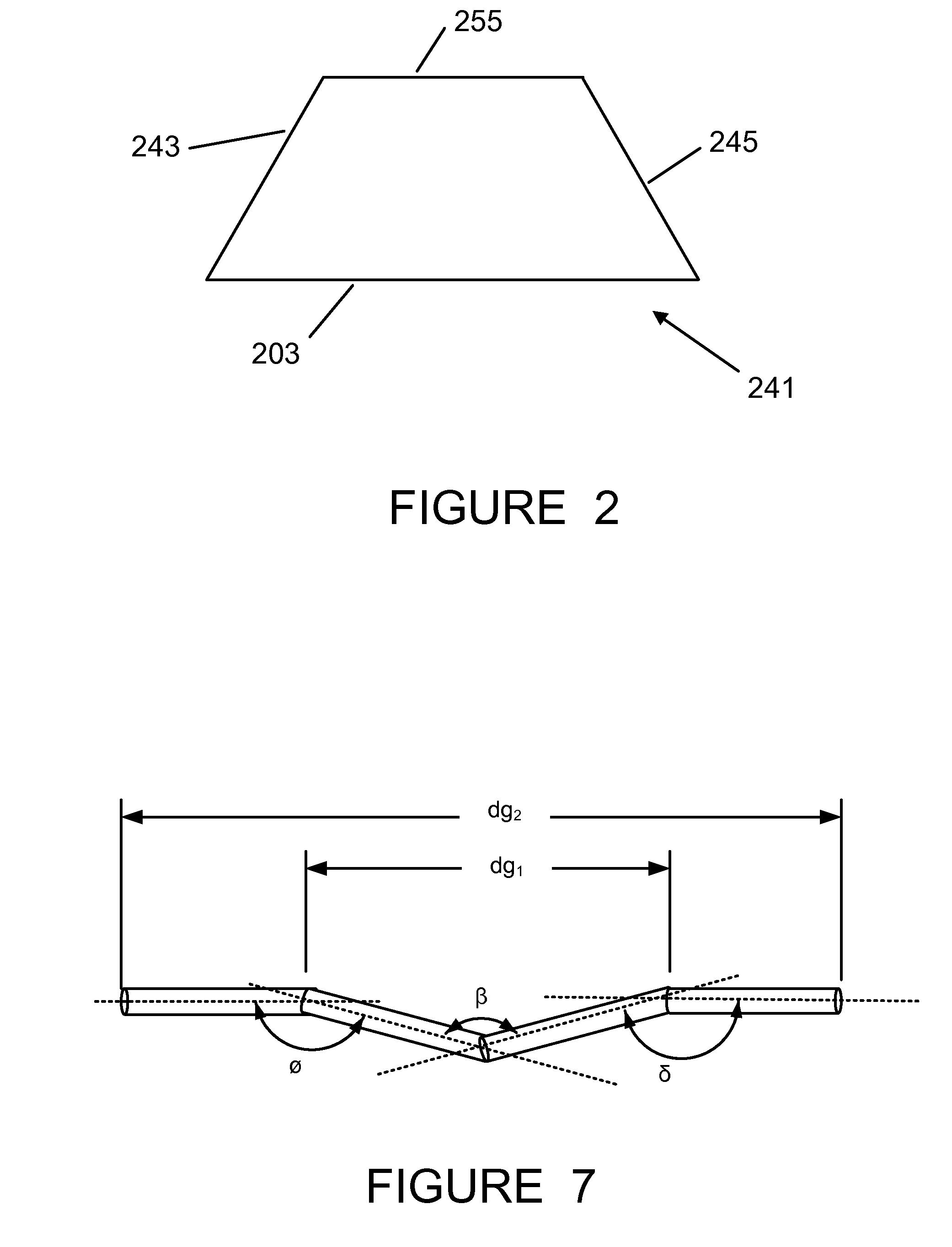Offset patient trapeze system
a trapeze system and patient technology, applied in the field of patient beds and devices, can solve the problems of difficult treatment and therapy, lack of suitable bariatric bed system and device, and many challenges that have not been adequately addressed for bariatric patients, and achieve the effect of improving patient transfer positioning
- Summary
- Abstract
- Description
- Claims
- Application Information
AI Technical Summary
Benefits of technology
Problems solved by technology
Method used
Image
Examples
Embodiment Construction
[0019]As shown in FIG. 1, a bariatric hospital bed 101 is provided including a frame 103 positioned on the floor, a deck 105 coupled to the frame 103, a mattress 107 positioned on the deck 105, a head board 109 coupled to the frame 103, a foot board 111 coupled to the deck 105 and frame 103, and a pair of side rails 113, 115 coupled to the frame 103. The frame 103 is configured to raise and lower the deck 105 relative to the floor and to move the deck 103 to the Trendelenburg position and to the Reverse Trendelenburg position.
[0020]The system and method of the present invention employs an offset trapeze frame 141 that mounts on the hospital bed 101. The offset trapeze frame 141 includes vertical supports 143a, 143b, 145a, 145b as well as a horizontal grid 151 that includes cross bars 153a, 153b and side bars 155a, 155b. The vertical supports 143a, 143b, 145a, 145b of the offset trapeze frame 141 of the present invention angle inward over the bed's head end H and foot end F, allowing...
PUM
 Login to View More
Login to View More Abstract
Description
Claims
Application Information
 Login to View More
Login to View More - R&D
- Intellectual Property
- Life Sciences
- Materials
- Tech Scout
- Unparalleled Data Quality
- Higher Quality Content
- 60% Fewer Hallucinations
Browse by: Latest US Patents, China's latest patents, Technical Efficacy Thesaurus, Application Domain, Technology Topic, Popular Technical Reports.
© 2025 PatSnap. All rights reserved.Legal|Privacy policy|Modern Slavery Act Transparency Statement|Sitemap|About US| Contact US: help@patsnap.com



